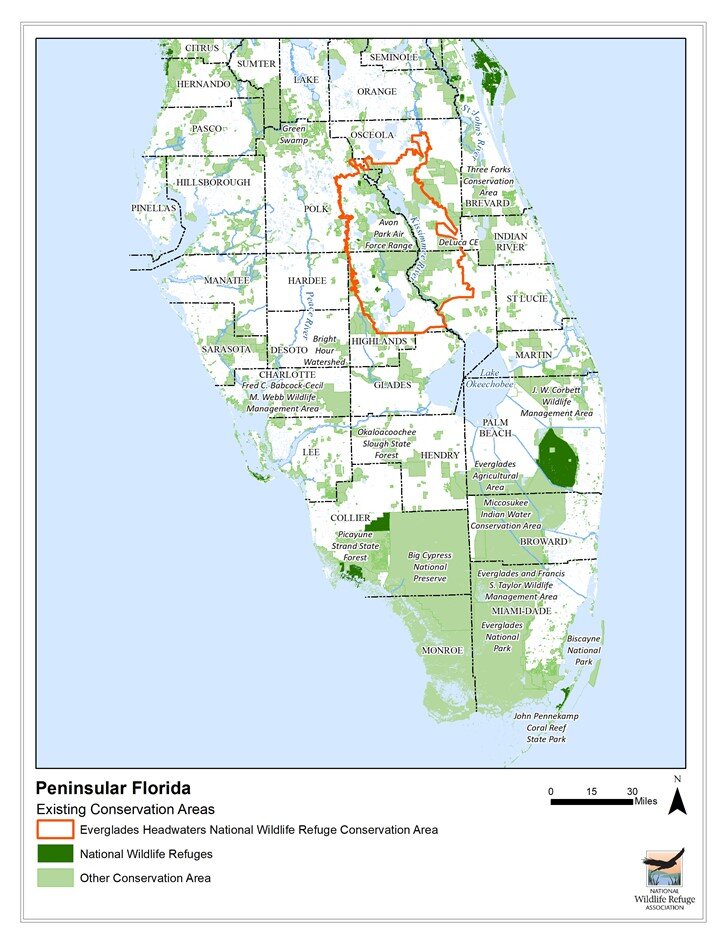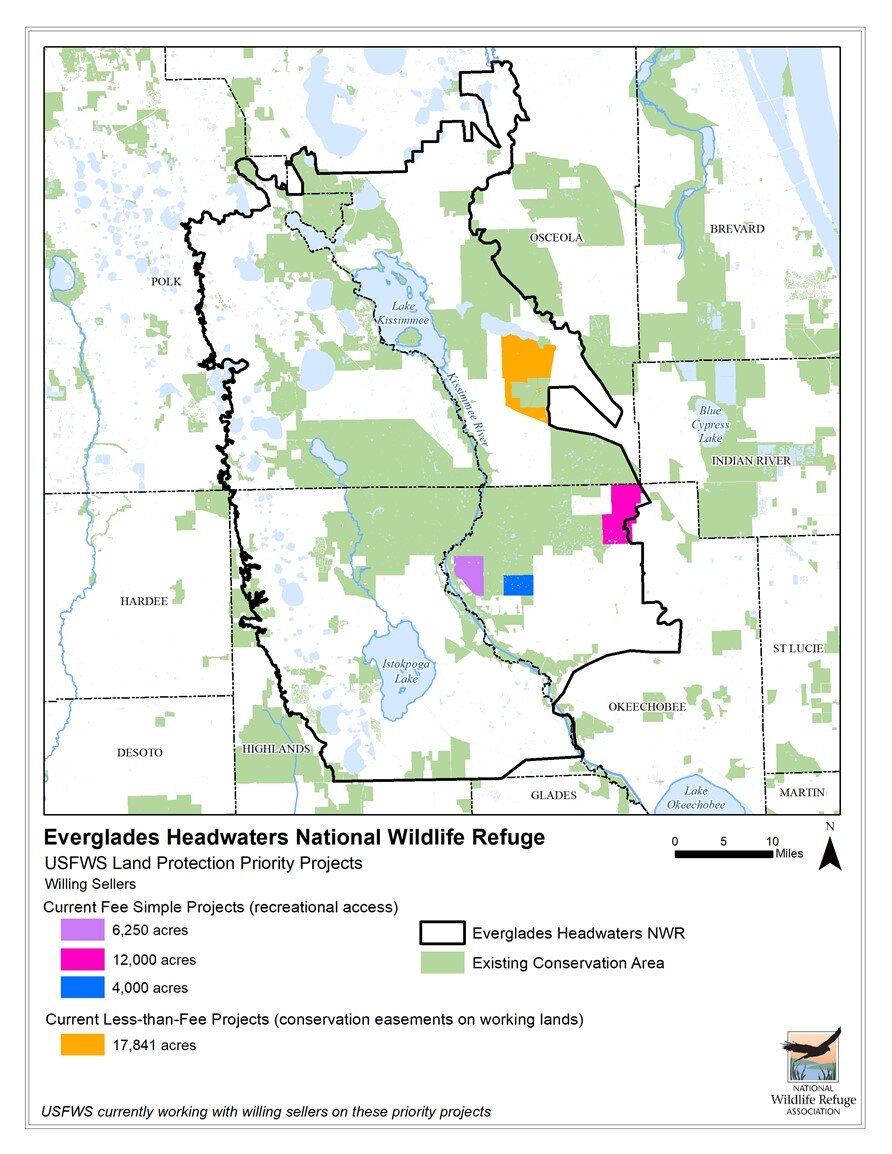Saving the Everglades Headwaters National Wildlife Refuge
From Orlando south to Lake Okeechobee lies the Everglades Headwaters National Wildlife Refuge, a region that plays an essential role in protecting and restoring water resources and contains more endemic species (found nowhere else) and some of the highest biodiversity in the nation. This area supplies the water needed for Everglades restoration and drinking water for one-third of all Floridians, and supports iconic species such as the Florida panther, the round-tailed muskrat, Everglade Snail Kite, Crested Caracara, wading birds galore, and many others that make Florida one of the most vibrant wildlife areas in the country.
The National Wildlife Refuge Association is dedicated to protecting strategic properties within the Everglades Headwaters National Wildlife Refuge and Conservation Area (EHNWR) before they are lost to development in rapidly growing central Florida.
EHNWR was started in 2012 after unprecedented cooperation among federal and state agencies, cattle ranchers, Everglades sportsmen, and conservation groups. This 2.6 million-acre region begins just south of Orlando in the northernmost part of the Everglades watershed and encompasses the Kissimmee River Valley, one of the last great grassland savannah landscapes in eastern North America. Water from this region is critical to the water supply of Lake Okeechobee, the Everglades, and the residents of South Florida. Once protected, the Refuge will contribute 150,000 acres of conserved land that will be critical for protecting imperiled species, connecting regional wildlife corridors, and ensuring restoration and protection of regional water resources. The region is almost one-half cattle ranches, which when sustainably managed are ideal for protecting these ecosystem and human values.
EHWNR goals include the protection of 100,000 acres with conservation easements, which protect the land from development and conserve its wildlife and water values while keeping the land in private ownership, privately managed (which reduces public costs), and on the tax rolls. An additional 50,000 acres will become (if protected) public conservation lands open to public recreational access, supported by the sportsmen’s community.
Credit: NWRA
The Land and Water Conservation Fund
Funding for US Fish and Wildlife Service’s (USFWS) land protection work is provided through the essential Land and Water Conservation Fund (LWCF). USFWS has been successfully leveraging money with the State of Florida, USDA’s Natural Resources Conservation Service (NRCS), and the Department of Defense’s (DOD) Readiness and Environmental Protection Initiative (REPI). REPI funding in the EHNWR landscape is part of cooperative efforts to protect the training mission, natural resources, and creating buffers for the Avon Park Air Force Range. By leveraging funding, the USFWS and other entities have been able to maximize the number of acres protected. Robust land conservation funding is essential because Florida is growing by approximately 300,000 people a year. Natural land conservation is a race with thousands of acres of natural habitat and ranches lost each year in this rapidly growing region. Without adequate federal and state conservation funds, very important for wildlife and water conservation opportunities will be lost to development forever.
Florida Panther, USFWS
Shovel Ready Projects in the EHNWR
There are currently lands essential for wildlife and water conservation that USFWS could protect immediately if funding is allocated to EHNWR from LWCF, with matching funds from state and other entities already available to leverage the federal investment. These include properties that are on the market now with willing sellers. All fee purchases by USFWS will be managed as a Wildlife Management Area by the Florida Fish and Wildlife Conservation Commission (public hunting access). Properties considered for conservation easements would protect the region’s cattle ranches – the backbone of the region’s economy and a low-intensity land use compatible with wildlife and water protection. These properties represent some of last expanses of dry prairie on private lands, which is a globally imperiled ecosystem. All of these projects are also in the Avon Park Air Force Range Sentinel Landscape, with the mutual benefits making the US Air Force a strong supporter of the EHWNR. These partners are ready for action, and NWRA and other conservation NGOs are eager to work with the federal agencies and Congress to ensure that LWCF funding flows to this critical landscape.
Credit: NWRA
The Time is Now
The future of the EHNWR, the Everglades Headwaters, and the Everglades watershed depend on a strong partnership between landowners, sportsmen, conservation NGOs, USFWS, NRCS, DOD and the state of Florida engaging in cooperative efforts to secure the land conservation funding needed to protect these key properties for wildlife, water, and public recreation. It is now or never, so please join us today.
Learn more about the work in the EHNWR in the Refuge Chat video below.
To celebrate 2021 as the first year of full permanent funding for LWCF, we are hosting monthly spotlights that showcase the incredible work of LWCF Coalition partners using America’s most important conservation and recreation program. This month, our partners at the National Wildlife Refuge Association talk about their critically important work using LWCF to protect water resources in the central Florida headwaters of the iconic Everglades.



